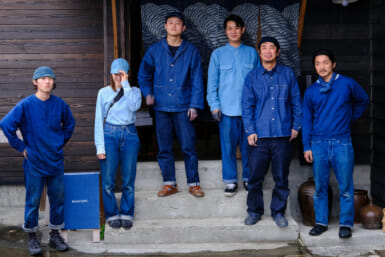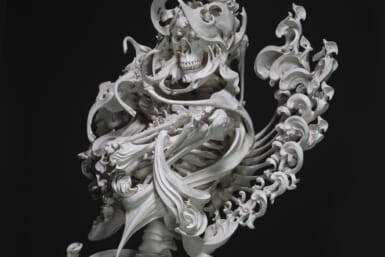by Owen Schaefer
Peter Piot, the UNAIDS program executive director, once wrote that “Art and AIDS have been inextricably linked throughout the epidemic’s quarter of a century history. Art has conveyed what words alone cannot.”
But art is linked to AIDS not only through some altruistic need to express the inexpressible, but by the fact that many artists have lost loved ones or their own lives to the disease. The Tokyo Metropolitan Museum of Photography’s current show, “Love’s Body — Art in the age of AIDS,” is a hard-hitting reminder of this.
The show features works by eight international artists and broadens the museum’s perspective in terms of medium by including paintings, scattered sculptures and a ready-made object. Many of the artists are not only photographers but known equally as well, or better, in other disciplines. As AIDS doesn’t discriminate who it selects, it’s appropriate that the show doesn’t either.
Going clockwise through the exhibition, one first encounters the ceiling-high image of a large bearded man nestling a pink new-born baby on his chest. What you learn is that the baby is the daughter of AA Bronson’s partner, Mark Jan Krayenhoff de Leur, and thus the child of four different parents, two men and two women. It is an image of love, and one that challenges the preconceptions of the viewer. At the same time, the image’s origins are in death: Years earlier, Bronson took a deathbed photo of his friend and collaborator Felix Partz in much the same position. He regards the newer version as a photo of life, balancing the photo chronicling death. It is the perfect place to begin and end a circular show that explores the very same questions of death, life, prejudice and love.
Australian artist William Yang provides the most documentary work of the show — a painful photo diary of a friend and lover slowly, and then rapidly, declining. Continuing this painful thread are the dark and lonely images of French author and photographer, Hervé Guibert; the influential portraits of Peter Hujar; a set of paintings and a ready-made by Cuban artist Felix Gonzalez-Torres; and the angry paintings and photos of David Wojnarowicz, who railed against the gay-bashing that thwarted attempts to deal with the issue of AIDS.
Indian-born Canadian photographer Sunil Gupta brings a sense of hope back into the show. When Gupta took on the project of photographing gay men in Delhi in 1986, he was forced to take images of people with their faces hidden. The social stigma was so strong and the gay community so thin, that it could only be a documentary of hidden lives. But when Gupta returned to the idea 20 years later, he found the situation very changed. While the community was still subdued, his subjects were willing to show their faces. (In 2009, the colonial law criminalizing homosexuality was struck down.)
The show’s sole Japanese artist also takes a positive, albeit curiously subversive, approach to the subject. Akira the Hustler, aka Cho Yukio, is not showing photographs at all, but instead gives us a number of ceramic sculptures of same-sex couples linked by red string — referencing the myth of lovers being tied together by destiny in the form of a red string. In one of the sculptures, the string is no longer string, but blood on their clasped hands, but the couple seem happy and smiling regardless. Then, in a slightly cloying video in which the phrase “The world is filled with love” is repeated again and again, there is a remark to the effect that sometimes a virus comes along with love. In both sculpture and video, Akira the Hustler ties the disease up inextricably with love, forcing the viewer to accept that both may come together.
As a subtitle, “Art in the age of AIDS” is an considered one. Although the panic may have faded, society is still very much in the “age of AIDS,” and, in a country like Japan where the number of AIDS-related deaths remains thankfully low, the issue has been far too easy to ignore.
Exhibition: ”Love’s Body — Art in the age of AIDS”
(till Dec. 5)
Venue: Tokyo Metropolitan Museum of Photography (Ebisu Station)
Hours: 10 noon–6 pm (till 8 pm Thu. & Fri.; closed Mon.)
Admission: ¥800
More info: www.syabi.com or call (03) 3280-0099









